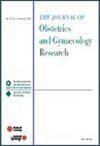The effect of methylphenidate on the reproductive function of female rats
Abstract
Aim
Research on the effects of methylphenidate on female fertility is limited. This study evaluated the effects of methylphenidate on reproductive function, oxidants, antioxidants, proinflammatory cytokines, prolactin, and cortisol in female rats.
Methods
Forty-eight albino Wistar female rats were divided into four groups consisting of 12 rats, which were given pure water orally once daily for 7 days (HG-1), 10 mg/kg methylphenidate orally once daily for 7 days (MP-1), pure water orally once daily for 30 days (HG-2), and 10 mg/kg methylphenidate orally once daily for 30 days (MP-2). At the end of the treatment periods, tail vein blood was collected from six rats per group for prolactin and cortisol determination. Subsequently, euthanasia was performed and the ovaries were removed. Ovaries were analyzed for malondialdehyde (MDA), total glutathione (tGSH), superoxide dismutase (SOD), catalase (CAT), interleukin-1 beta (IL-1β), and tumor necrosis factor-alpha (TNF-α), and immunohistochemically. For breeding, the remaining six rats were mated with male rats for 1 month. Rats that failed to give birth were classed as infertile.
Results
A comparison of MP-1 and MP-2 groups to healthy controls revealed an elevation in MDA and corticosterone levels, and a decline in tGSH, SOD, and CAT levels (p < 0.001). Methylphenidate did not affect prolactin, IL-1β, and TNF-α levels (p > 0.05). MP-1 and MP-2 exhibited immunopositivity for 8-hydroxy-2'-deoxyguanosine (8-OHDG). MP-2 rats developed 66.7% infertility while MP-1, HG-1, and HG-2 rats did not.
Conclusion
In ovaries, methylphenidate caused oxidative stress, but did not induce inflammation. Long-term use of methylphenidate caused increased cortisol levels and infertility.

 求助内容:
求助内容: 应助结果提醒方式:
应助结果提醒方式:


